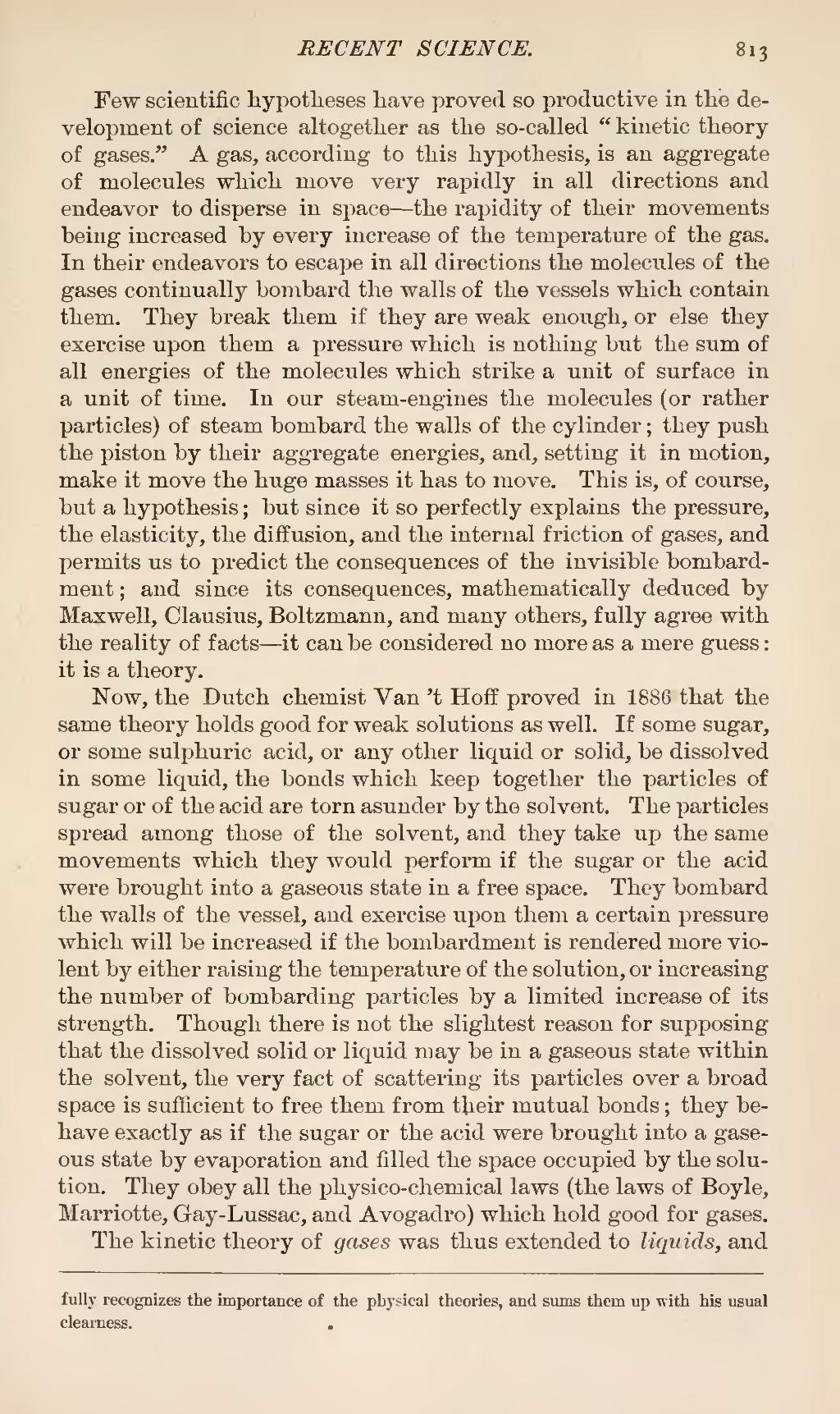Few scientific hypotheses have proved so productive in the development of science altogether as the so-called "kinetic theory of gases." A gas, according to this hypothesis, is an aggregate of molecules which move very rapidly in all directions and endeavor to disperse in space—the rapidity of their movements being increased by every increase of the temperature of the gas. In their endeavors to escape in all directions the molecules of the gases continually bombard the walls of the vessels which contain them. They break them if they are weak enough, or else they exercise upon them a pressure which is nothing but the sum of all energies of the molecules which strike a unit of surface in a unit of time. In our steam-engines the molecules (or rather particles) of steam bombard the walls of the cylinder; they push the piston by their aggregate energies, and, setting it in motion, make it move the huge masses it has to move. This is, of course, but a hypothesis; but since it so perfectly explains the pressure, the elasticity, the diffusion, and the internal friction of gases, and permits us to predict the consequences of the invisible bombardment; and since its consequences, mathematically deduced by Maxwell, Clausius, Boltzmann, and many others, fully agree with the reality of facts—it can be considered no more as a mere guess: it is a theory.
Now, the Dutch chemist Van 't Hoff proved in 1886 that the same theory holds good for weak solutions as well. If some sugar, or some sulphuric acid, or any other liquid or solid, be dissolved in some liquid, the bonds which keep together the particles of sugar or of the acid are torn asunder by the solvent. The particles spread among those of the solvent, and they take up the same movements which they would perform if the sugar or the acid were brought into a gaseous state in a free space. They bombard the walls of the vessel, and exercise upon them a certain pressure which will be increased if the bombardment is rendered more violent by either raising the temperature of the solution, or increasing the number of bombarding particles by a limited increase of its strength. Though there is not the slightest reason for supposing that the dissolved solid or liquid may be in a gaseous state within the solvent, the very fact of scattering its particles over a broad space is sufficient to free them from their mutual bonds; they behave exactly as if the sugar or the acid were brought into a gaseous state by evaporation and filled the space occupied by the solution. They obey all the physico-chemical laws (the laws of Boyle, Marriotte, Gay-Lussac, and Avogadro) which hold good for gases.
The kinetic theory of gases was thus extended to liquids, and
fully recognizes the importance of the physical theories, and sums them up with his usual clearness.
